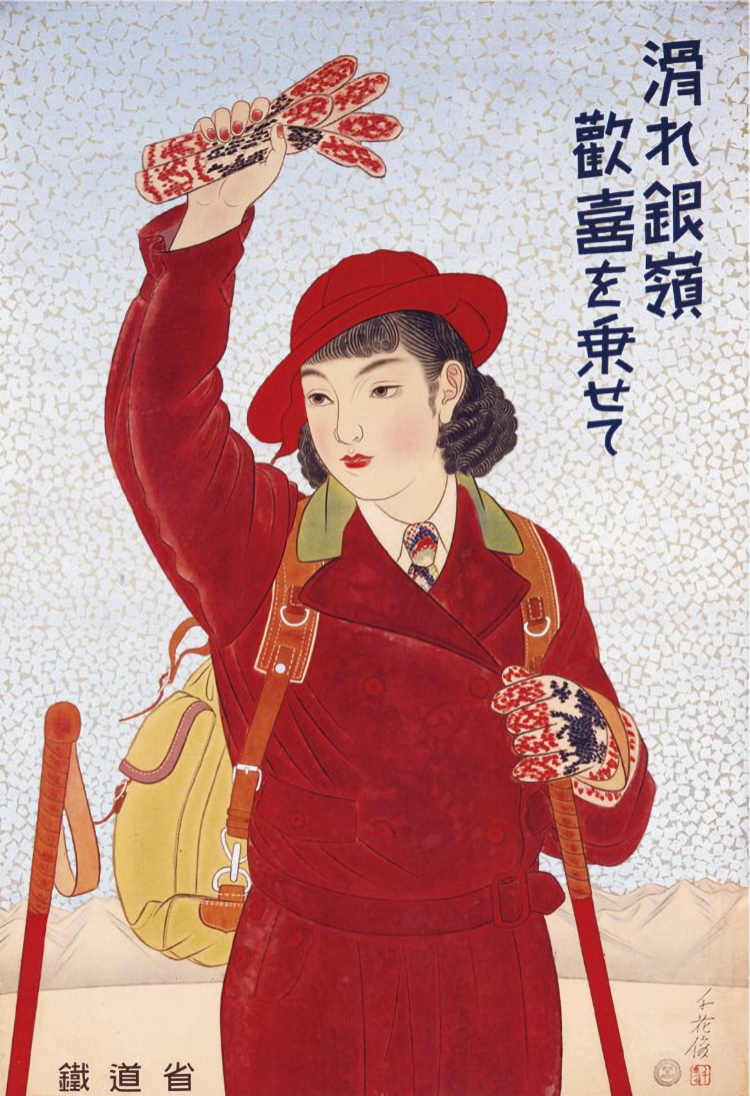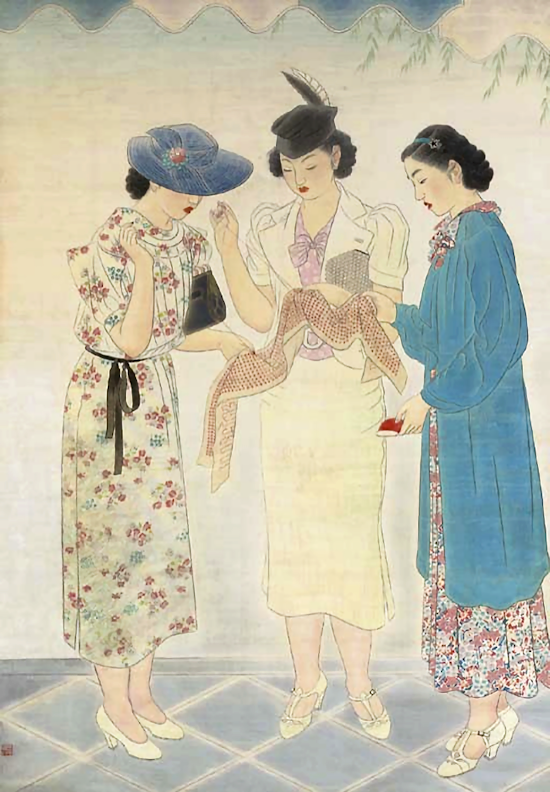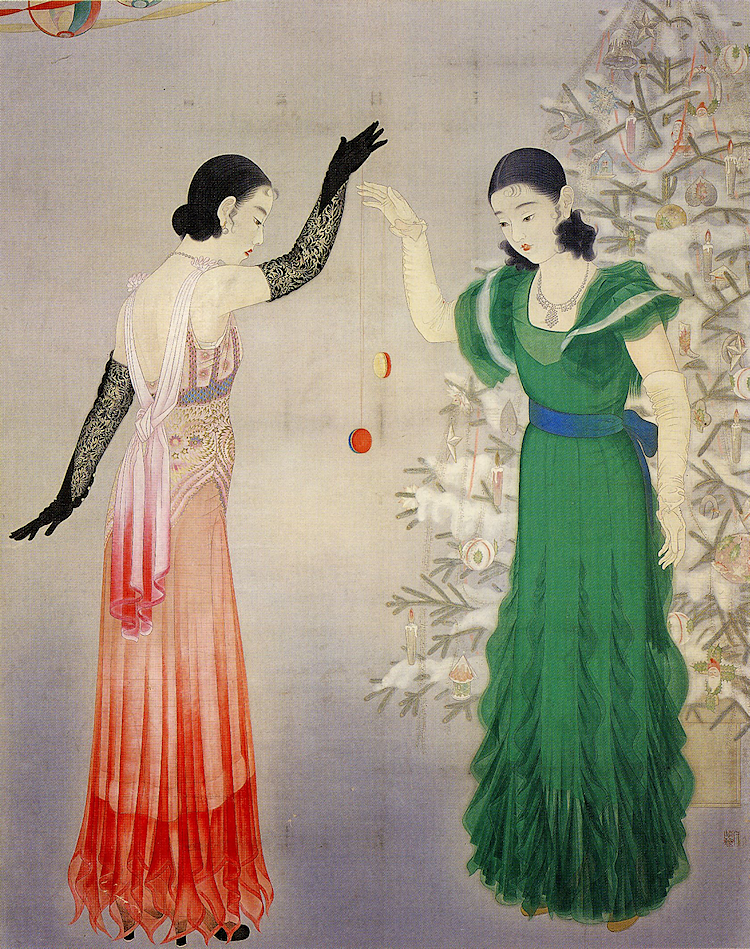 |
| Spring by a Pond, 1932. |
 |
| Lady with Terrier on Leash, two-panel screen, circa late 1930s. |
 |
| Ski, for the Ministry of Railroads, 1938. |
.png) |
| The set of six paintings comprising the "Florida" series, circa 1935. |
.png) |
| The Ballroom Florida - its name taken from a Parisian nightclub - first opened 1928, and was one of Japan's foremost jazz-age dance halls. |
.png) |
| The young women pictured are believed to represent the elegant "taxi dancers" who were employees of the establishment and/or some of the club's chic clientele. |
 |
| A Thousand Needles to Support the Troops, circa late 1930s. |
 |
| Silver Mountain, 1939 - or - Snow-Capped Mountaintop, 1942. |
 |
| Another version of the above. |
 |
| Beauty Under the Cherry Blossoms, circa early 1930s. The only figure, here, to be portrayed in traditional Japanese attire. |
 |
| Winter Scene of a Young Beauty Adjusting her Skis, two-panel screen, circa 1936-40. |
 |
| Aquarium, 1939. |
 |
| Playing Yo-Yo, 1933. |
 |
| I'm not entirely sure, but I believe that the "noise" evident in the detail images of this piece is actually the weave of the silk used as the ground for the painting. |
*
 |
| Garden, 1934. Frustratingly, I couldn't find a larger image of this painting - I tried! |
 |
| But the detail of the shoes, which I did find, was too delicious not to share. |
*
Enomoto Chikatoshi (榎本 千花俊; 3 March 1898, Tokyo - 30 March 1973), Japanese painter and printmaker. In 1916, he began to study painting under Kaburaki Kiyokata, and graduated from the Nihonga Department of the Tokyo School of Fine Art in 1921. In 1922 he first had a painting accepted at a government-sponsored exhibition, the 4th Teiten. In 1930, his Teiten work won the
tokusen or grand prize. He subsequently exhibited annually at the Teiten, and afterwards at nearly every Shin-Bunten with non-vetted status (
mukansa). During his career, he frequently exhibited his work in both Japan and in the United States. Beginning in the early Thirties he became well-known for his “modern” (
modan) paintings of beautiful women, continuing in the traditional Japanese genre of
bijin-ga, but portraying his subjects dressed in up-to-the-moment Western fashion. After WWII, he became a committee member of the Nitten. Today, examples of his art are included in such major collections as the Museum of Fine Arts, Boston, the Chicago Art Institute, and the Tokyo Museum of Modern Art.



.png)
.png)
.png)















.png)

.png)
.png)
.png)
.png)
.png)

.png)

.png)








These paintings are just gorgeous, as gorgeous themselves as their subjects. I especially like the two-panel Lady With a Terrier on Leash.
ReplyDeleteD'une époque où le Japon est devenu un pays moderne comme le reflète son art. Il a parfois rencontré la résistance des militairistes qui désiraient un art plus traditionnel.
ReplyDelete-Beau Mec à Deauville
The grass stains on those heels is perfection.
ReplyDelete